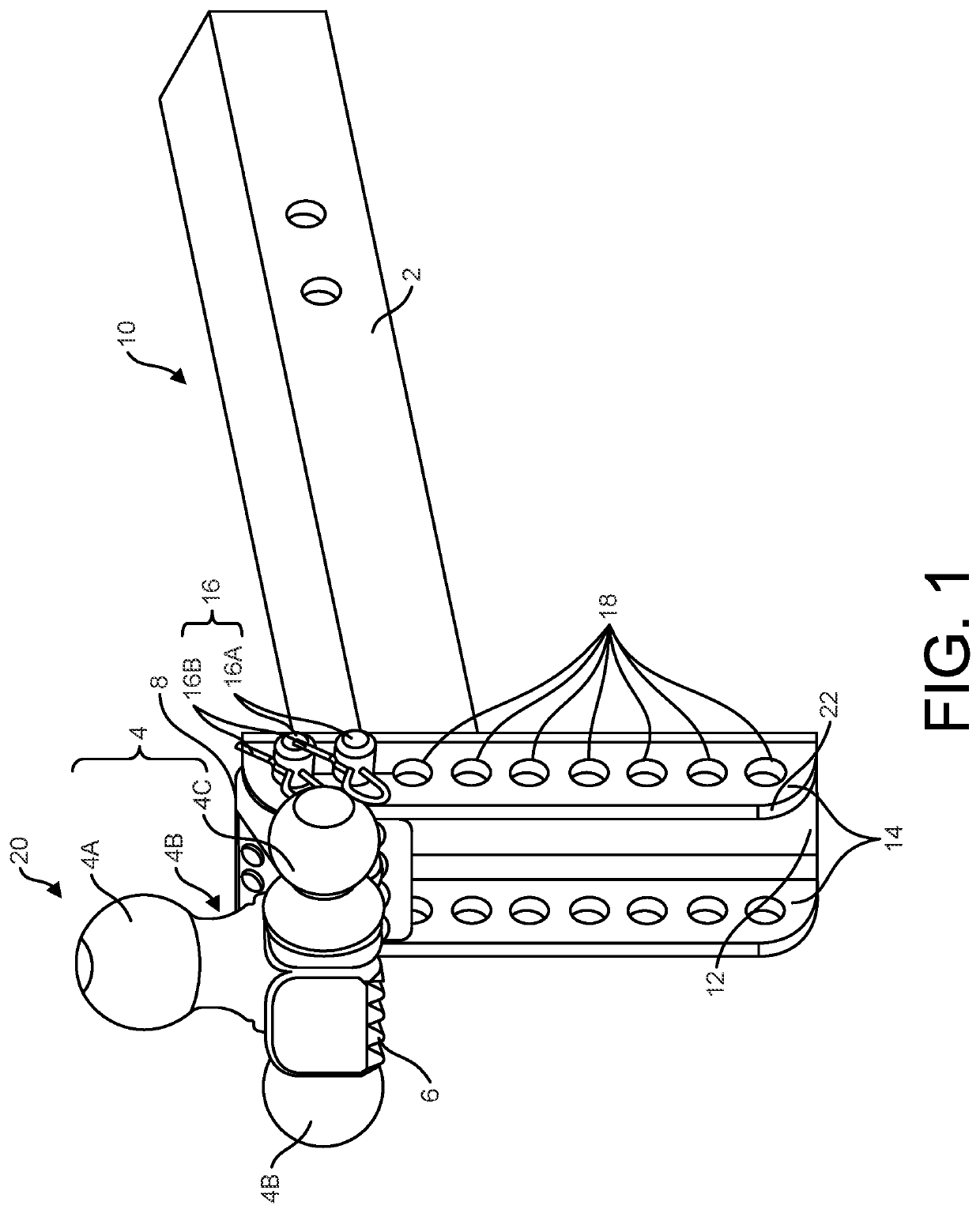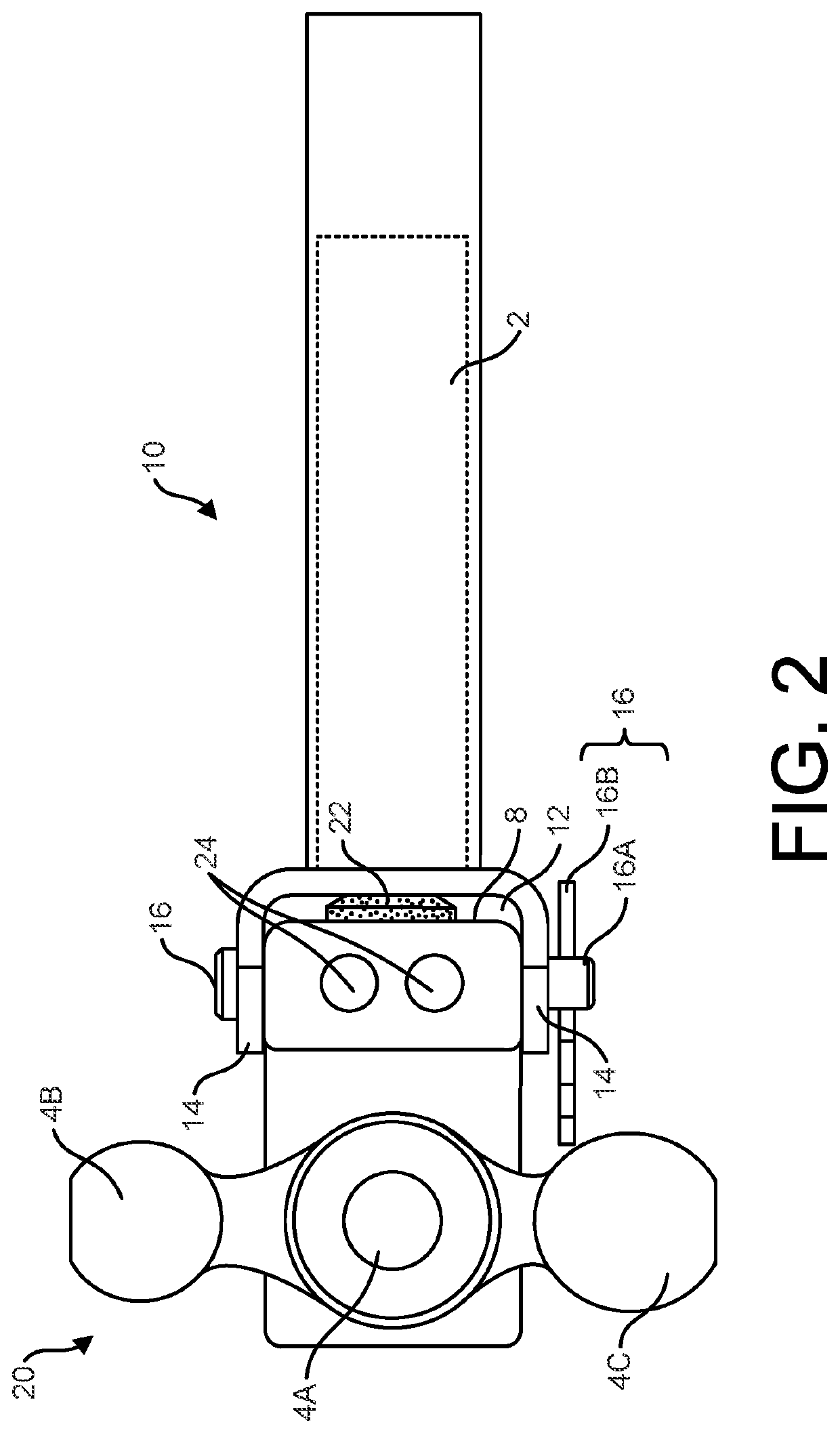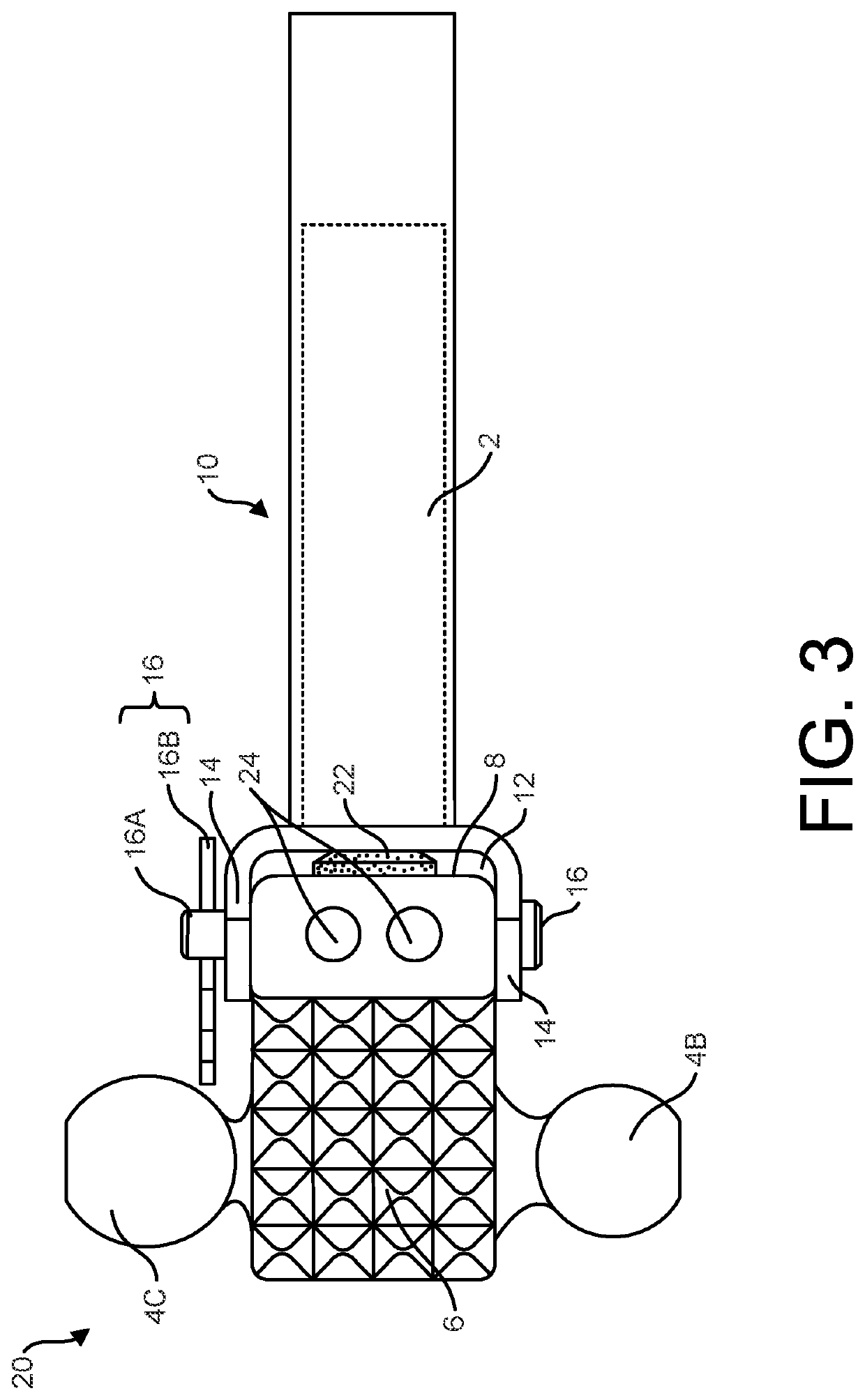A particular problem with the use of these
receiver coupling systems is play between the receiver hitch platforms and hitch ball or direct tow accessory assemblies.
The base of the tow
mount or accessory tends to rattle or chatter within the channel of the hitch platform.
This rattle or chatter is at best an annoyance and at worst can distract the driver or cause damage to the trailer or the carrier.
Although the latter dual pin
mount provided the substantial improvements of reduced play, rattling and pivoting of the hitch
assembly relative to the vehicle, movement and vibration due to loosening and play between the tow accessory member and hitch receiver platform persists.
Such movement, vibration and
noise is exacerbated if the tow accessory is installed on an upper or lower section of the channel and thus not evenly supported along the base of the tow accessory.
Such eccentric positioning of the hitch ball along the hitch platform channel and resulting movement causes vibrations and gyrating movement.
In extreme driving
terrain or weather conditions, even hazardous swaying of the vehicle may result.
However, since the rubber device is installed in the hitch platform, the hitch ball may not align with the rubber device in all positions, particularly when a dual
flange ball that is installed on the uppermost or lowermost portion of the platform.
Although the latter device provided an improvement over prior art hitch assemblies and reduced rocking, swaying and pivoting of the hitch assembly relative to the vehicle, issues arising from loose rattling between the tow accessory member and hitch receiver platform persists.
As is readily surmised from consideration of impacts and resulting external forces exerted upon a vehicle and any towed accessory will shake and exert commensurate stress loosening abutting rigid
metal surfaces of the hitch assembly and will resonate toward edges of the hitch ball base and platform, resulting in rattling and possible swaying of the vehicle.
Such vibration,
noise and directional interference with safely steering the car may be exacerbated if the hitch ball or tow accessory are not tightly compressed along the channel of the platform.
This is particularly problematic if the hitch ball
mount tow accessory is installed on an uppermost or lowermost end of the channel where the entire length of the hitch ball mount base is not supported along the channel of the tow accessory, which is a particularly prevalent issue associated with dual
flange ball.
When in upper and lower mounted positions, the base may extend beyond the channel and flanges support exacerbating movement causing rattling and vibrations and may even cause veering, swaying, gyrating and even dangerous pivoting to one side or another of the vehicle that is difficult.
This rattle or chatter is at best an annoyance and at worst can distract the driver or cause damage to the vehicle or tow accessory.
The drawbacks of unattenuated rattle or sway may be exacerbated when multi-purpose hitch mounts with more complex structures are used.
The convergence of the load stress on the tow hitch and pin mount thus limit the tolerance levels of conventional tow hitch accessory mounts.
However, drawbacks associated with the bulk and density as well as piecemeal joining, typically by
soldering or
welding, of corresponding mated surfaces of the each of the three balls as well as the step may compromise the strength and durability of conventional triple ball mounts.
Unfortunately, the
impact and torque exerted by the
physical load together with the vibration and pressure from the pulling and pushing on the adjoined surfaces and
fastener pins of conventional triple ball tow hitch may erode and loosen the adjoined surfaces of components of conventional
multiple function hitch mounts thereby compromising their strength, durability and safety.
Moreover, the bulk and density of such multifunctional tow mounts exacerbate the vibrational rattle and sway caused by friction between abutting
metal surfaces of the hitch and socket and attachment hardware, such as
fastener pins securing a telescoped tow shank into the receiver tube of the
towing vehicle.
Yet another
disadvantage attendant to conventional mounts for triple ball mounts is the lack of height adaptability.
Thus, although the variously sized balls accommodate different socket sizes of tow accessories, they are not adjustable to the height of a particular trailer or other equipment being towed.
This is a particular problem if the
towing vehicle hitch receiver sits relatively low to the ground and alternatively and a relatively high trailer exerts a lifting action on the back end and wheels while the front is pushed downwardly.
In the latter situation, the towed load pressure may even cause gyrations and involuntary directional pulls that could ultimately cause the driver of the
towing vehicle to lose control and even result in an accident.
 Login to View More
Login to View More  Login to View More
Login to View More 


